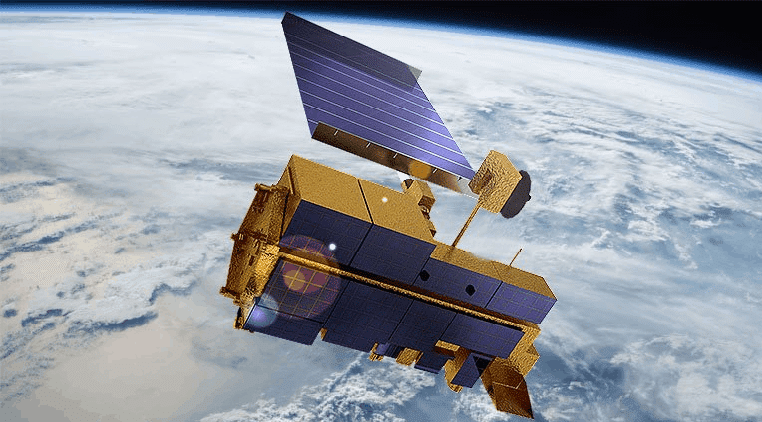What is Moderate Resolution Imaging Spectroradiometer?
Moderate Resolution Imaging Spectroradiometer is a key instrument aboard the Terra (originally known as EOS AM-1) and Aqua (originally known as EOS PM-1) satellites.
- Terra’s orbit around the Earth is timed so that it passes from north to south across the equator in the morning, while Aqua passes south to north over the equator in the afternoon.
- Terra MODIS and Aqua MODIS are viewing the entire Earth’s surface every 1 to 2 days, acquiring data in 36 spectral bands, or groups of wavelengths.
- These data will improve our understanding of global dynamics and processes occurring on the land, in the oceans, and in the lower atmosphere.
Significance of MODIS
It is playing a vital role in the development of validated, global, interactive Earth system models able to predict global change accurately enough to assist policymakers in making sound decisions concerning the protection of our environment.
Moderate Resolution Imaging Spectroradiometer: Key Findings
Some of the key findings of the analysis of data generated from Moderate Resolution Imaging Spectroradiometer are as follows:
- The waters in the tropics have turned green and the southern Indian Ocean, in particular, has seen a significant colour change.
- Changes in the ocean colour indicate alterations to the phytoplankton communities – since phytoplankton are essential for most life in the ocean as the base of the marine food web.
- Human eyes are not sensitive enough to differentiate subtle colour changes.
- The oceans appear blue, but the true colour may contain a mix of subtler wavelengths, from blue to green and even red.
- The green hue comes from chlorophyll, a pigment that helps phytoplankton make food.
- A change in colour due to an increase or decline in the population will impact organisms that feed on plankton.
- Though the southern Indian Ocean is seeing a significant change, the waters near India are not following the same trend.
FAQs on Moderate Resolution Imaging Spectroradiometer (MODIS)
What is MODIS or Moderate Resolution Imaging Spectroradiometer?
MODIS is designed to provide global observations of the Earth’s land, oceans, and atmosphere on a daily basis. The primary goal of the Moderate Resolution Imaging Spectroradiometer is to gather information about the Earth’s climate and environment, including measurements of various atmospheric, land surface, and oceanic parameters.
What are the recent findings of MODIS?
In a recent study, researchers examined data collected by the Moderate Resolution Imaging Spectroradiometer and determined that the colour of 56 per cent of the Earth’s oceans has been changed due to climate change.
Source: Tropical waters have turned green in colour, courtesy climate change: Study
Last updated on June, 2025
→ UPSC Notification 2025 was released on 22nd January 2025.
→ UPSC Prelims Result 2025 is out now for the CSE held on 25 May 2025.
→ UPSC Prelims Question Paper 2025 and Unofficial Prelims Answer Key 2025 are available now.
→ UPSC Calendar 2026 is released on 15th May, 2025.
→ The UPSC Vacancy 2025 were released 1129, out of which 979 were for UPSC CSE and remaining 150 are for UPSC IFoS.
→ UPSC Mains 2025 will be conducted on 22nd August 2025.
→ UPSC Prelims 2026 will be conducted on 24th May, 2026 & UPSC Mains 2026 will be conducted on 21st August 2026.
→ The UPSC Selection Process is of 3 stages-Prelims, Mains and Interview.
→ UPSC Result 2024 is released with latest UPSC Marksheet 2024. Check Now!
→ UPSC Toppers List 2024 is released now. Shakti Dubey is UPSC AIR 1 2024 Topper.
→ Also check Best IAS Coaching in Delhi
























